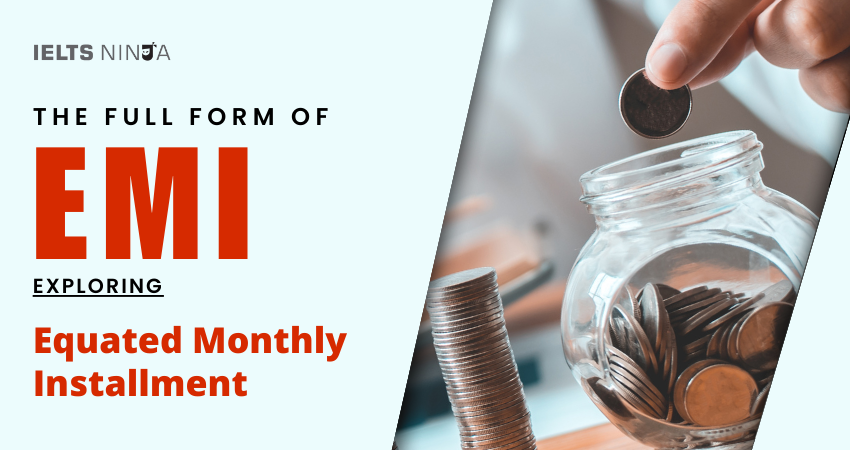In the world of finance and lending, the full form of “EMI” stands for Equated Monthly Installment. It is a widely used method for repaying loans and financing purchases, such as homes, cars, consumer goods, or personal loans. EMIs make it convenient for borrowers to pay back borrowed money over time in fixed monthly installments, which include both the principal amount and the interest. This approach allows individuals to manage their finances effectively and plan their budgets. In this comprehensive guide, we will explore the details of EMI, how it works, its components, and its significance in personal finance.
What is EMI?
An Equated Monthly Installment (EMI) is a fixed amount of money paid by a borrower to a lender at a specified date each calendar month. It comprises two components:
- Principal Amount: This is the portion of the EMI that goes towards repaying the original loan amount (the principal).
- Interest: The interest component is the cost of borrowing money. It is calculated based on the outstanding loan balance.
How EMI Works
The calculation of EMI is based on several factors:
- Loan Amount: The total amount borrowed, also known as the principal.
- Interest Rate: The annual rate of interest charged by the lender.
- Loan Tenure: The duration for which the loan is taken, usually expressed in months.
The formula for calculating EMI is complex, but financial institutions and online EMI calculators simplify this process. Here’s how it works:
- The total interest payable over the loan tenure is calculated using the interest rate, loan amount, and loan tenure.
- The total repayment amount (the principal amount plus interest) is divided by the loan tenure (in months) to arrive at the fixed monthly EMI.
Also Read: Best online IELTS coaching & training academy
Significance of EMI
EMIs offer several advantages for borrowers:
- Budget Planning: EMIs provide predictability, making it easier for borrowers to plan their monthly budgets.
- Affordability: By breaking down large expenses into smaller, manageable installments, borrowers can afford expensive purchases like homes or vehicles.
- Consistency: EMIs are consistent throughout the loan tenure, simplifying financial planning.
- Financial Discipline: Borrowers are encouraged to make regular, timely payments, instilling financial discipline.
- Transparency: Borrowers can see the allocation of each EMI between principal and interest, helping them understand the progress of their loan repayment.
Types of Loans with EMIs
EMIs are commonly associated with various types of loans:
- Home Loans: Borrowers repay the amount borrowed to purchase a house through EMIs.
- Car Loans: EMIs help finance the purchase of vehicles, with repayment spread over time.
- Personal Loans: Borrowers use personal loans for various purposes, such as travel, medical expenses, or debt consolidation, with EMIs as the repayment method.
- Consumer Durable Loans: For purchasing consumer goods like electronics and appliances.
Conclusion
Equated Monthly Installments (EMIs) are a practical and widely used financial tool that enables individuals to borrow money and repay it in manageable monthly installments. EMIs provide predictability, transparency, and affordability for borrowers, making them a popular choice for various types of loans. Understanding how EMIs work is essential for anyone considering borrowing money to finance significant purchases or meet financial goals.








